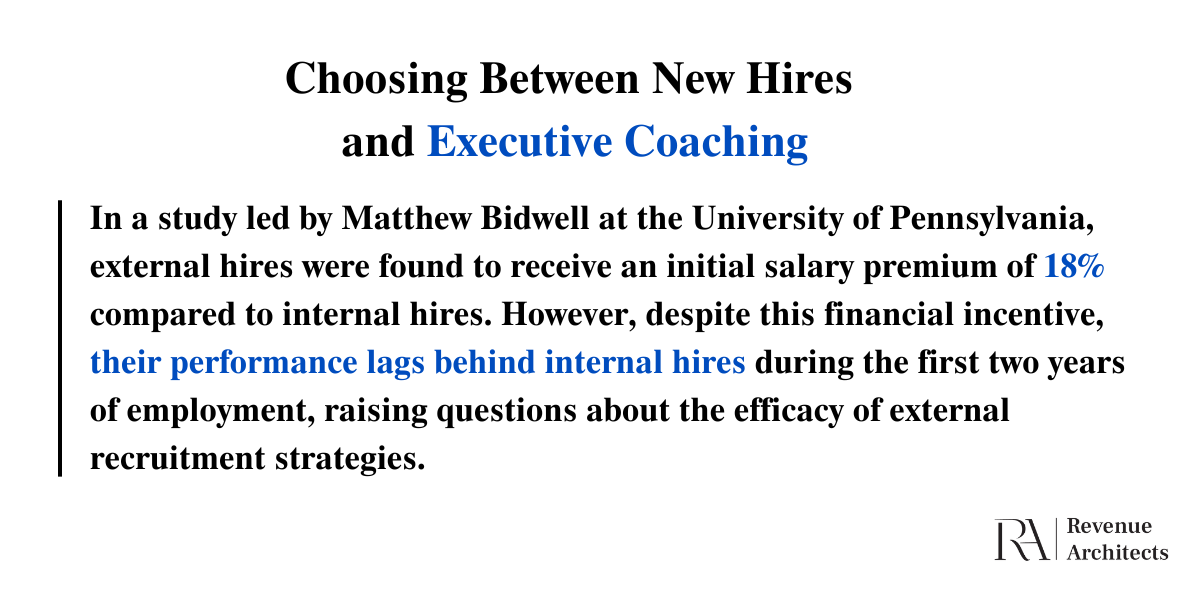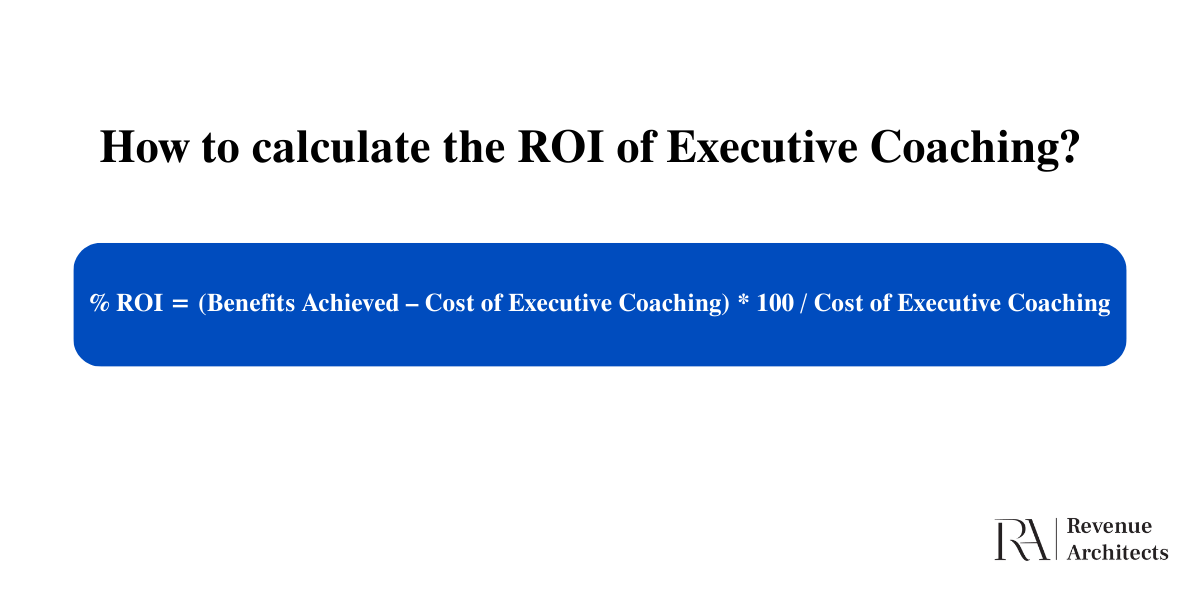Calculating the Return on Investment (ROI) associated with Executive Coaching can be a significant challenge for many business people. It depends on numerous factors and the business climate, but there are some solutions available when it comes to calculating the return on investment.
In this article, we will provide you with some general examples and ways to calculate it.
Assessing the Return on Investment (ROI) of executive coaching is crucial for businesses aiming to justify expenditure and drive strategic growth. Leaders quantify the impact of coaching initiatives on individual performance and organizational outcomes, enabling informed decisions about resource allocation and program refinement. Ultimately, calculating ROI serves as a vital tool for optimizing coaching effectiveness and maximizing the value of talent development investments in today’s competitive business landscape.
Imagine a thriving tech startup, rapidly gaining market share. At the helm is the Chief Revenue Officer (CRO), a seasoned sales leader renowned for their strategic acumen and revenue-driving capabilities, which have been pivotal in the company’s success. However, as the company expands, the sales department faces new challenges.
Despite initial success, the sales team begins to encounter difficulties in adapting to the evolving market landscape. Sales targets are consistently missed, and customer retention rates show a concerning decline. Additionally, internal communication breakdowns hinder collaboration between sales, marketing, and product development teams, resulting in missed opportunities and disjointed customer experiences.
Recognizing these challenges, the CEO understands the critical role the CRO plays in steering the company through this growth phase. Instead of resorting to immediate personnel changes, the CEO sees an opportunity for the CRO to benefit from executive coaching.

Executive coaching is proposed as a means to provide the CRO with personalized guidance and support in addressing these emerging challenges. The coaching process aims to enhance the CRO’s leadership skills, improve communication strategies, and refine their ability to navigate complex business dynamics.
By investing in executive coaching for the CRO, the CEO aims to empower them to lead the sales team more effectively, foster greater alignment across departments, and ultimately drive sustained revenue growth amidst the company’s expansion.
After just four months of ‘intensive coaching sessions’, the CRO’s performance showed marked improvement. Team members felt a clearer sense of purpose. The VP learned to be less prescriptive, granting team members greater authority and enabling more genuine and authentic client relationships.
Upon reviewing recent 360-degree evaluations and performance metrics, the CEO gained confidence that a replacement was no longer necessary. So, they didn’t have to go through months and months of the hiring process and onboarding. However, time saved is not the only benefit of executive coaching sessions.

The benefits achieved can be gauged by determining the costs incurred by not hiring an executive coach. This analysis only scratches the surface, as it excludes other tangible and intangible benefits associated with the absence of coaching, such as improved decision-making, enhanced leadership skills, increased employee engagement, and improved team dynamics. These benefits, although not easily quantifiable, can significantly impact the organization’s overall performance and success.
On the other hand, César Piqueras, an experienced Spanish coach, asserts that any positive return from executive coaching is linked to helping individuals develop a ‘greater awareness ‘. This ‘greater awareness’ refers to a deeper understanding of one’s strengths, weaknesses, and potential, as well as the impact of one’s actions on others and the organization. With this new awareness, individuals can make better decisions, take more effective actions, and be the protagonists of their processes and decisions.
From this standpoint, the formula would be:
Greater Awareness = More Possibilities = Better Choices
Piqueras emphasizes that we cannot assign a definitive numerical return, highlighting the following cases:
Although there are various methods to calculate ROI, the main issue always involves a number of variables. Some of the most important ones to consider are:
Ultimately, executive coaching can be a costly investment. However, all evidence points to organizations investing to recover their money.
Aligning coaching goals with business objectives is not just important, it’s crucial for organizations seeking to integrate coaching into their strategic initiatives. Executive coaching should not be viewed as a standalone intervention but as a vital component of the company’s overall strategy. This alignment ensures that coaching efforts are directed toward areas that directly influence business performance, such as leadership development, team cohesion, and innovation.
Organizations can start by identifying key performance indicators (KPIs) influenced by coaching. Regular assessments and feedback loops should be established to measure progress and adjust coaching strategies. Additionally, fostering a culture of continuous improvement and learning can amplify the benefits of coaching, creating a sustainable impact on organizational growth and success.
In conclusion, the evidence is clear: investing in executive coaching yields substantial returns. CEOs across industries are recognizing the transformative impact of coaching on both individual leaders and their organizations as a whole. With an average return exceeding sixfold the initial investment, executive coaching emerges not only as a wise strategic choice but also as a powerful tool for driving sustainable growth and success. As you chart the course for your company’s future, consider the significant ROI that executive coaching offers—an average return of more than $100,000, showcasing its undeniable value. Take the next step towards unlocking your full potential and that of your team by booking courses with experienced sales coaches and their courses at Revenue Architects.
Growthnetix OÜ
Harju maakond Kesklinna
linnaosa, Ahtri tn 12, 10151
Tallinn, Estonia
VAT number: EE102550717